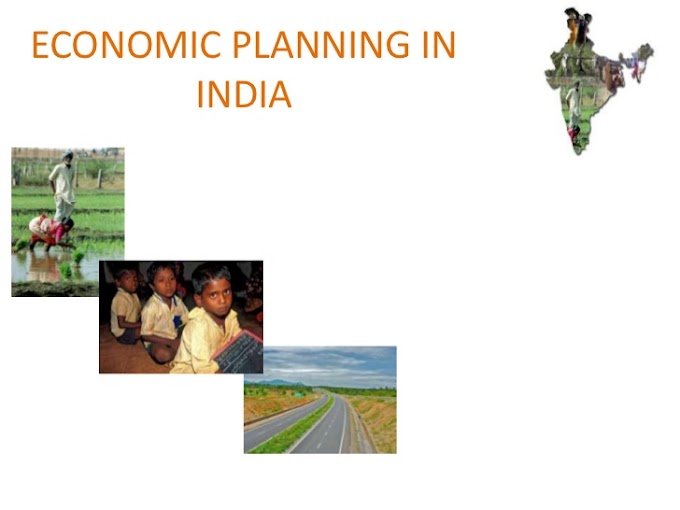Nominal executive head
Normally each State has its own Governor, but under the Seventh Amendment Act, 1956, the same person can be appointed as Governor of one or more States or Lt. Governor of the Union Territory.
Appointed by the President on the recommendations of
Governor Qualification
- Citizen of India.
- Completed 35 yrs of age.
- Shouldn’t be a member of either house of parliament or the state legislature.
- Must possess the qualification for membership of State Legislature.
- Mustn’t hold any office of profit.
Other Points
- His usual term of office is 5 yrs but he holds office during the pleasure of the President.
- He can be asked to continue for more time until his successor takes the charge.
- Can give his resignation or can be removed earlier by the President.
- The legislature of a State or a High Court has no role in the removal of a Governor.
- Salary from the Consolidated Fund of the State (Rs 1,10,000 per month) and is not subject to the vote of the State Legislature.
- When the same person is appointed as the Governor of two or more States, the emoluments and allowances payable to him shall be allocated among the States in such proportion as determined by the President of India.
- His oath is administered by the Chief Justice of the concerned State High Court and in his absence, the senior – most judge of that Court.
Governor Powers
a. Executive Powers of the Governor
Appoints Chief Minister, Council of Ministers, Chairman & members of State Public Service Commission, Advocate General of the State and Election Commissioner of the State.
b. Legislative Powers of the Governor
- Summons, Prorogues & dissolves the State Legislature.
- Addresses the first session of State Legislature after election and at the beginning of each new session.
- Sends messages to State Legislature on bills pending before it.
- Appoints l/6th members of Legislative Council.
- Nominates one member from the Anglo-Indian community (if not proper representation).
- Makes laws through ordinances.
- Gives assent to the Bills so that they become laws.
- The Governor has three alternatives before him with respect to the Bills :
- He can give his assent to the Bill;
- He can return it, if it is not a Money Bill, for reconsideration suggesting alternations. But such Bills when passed again have to be given assent;
- He may reserve the Bill for the assent of the President.
c. Financial Powers of the Governor
Ensures that the budget is laid. All money bills can be introduced on his recommendation only.
d. Judicial Powers of the Governor
- President consults Governor while appointing Chief Justice and other judges of High Court.
- Appoints judges of courts below the High Court can grant pardon reprieve or remission of punishment for offense against State laws.
- But he cannot grant pardon in cases of death sentences.
e. Emergency Powers of the Governor
- Reports to the President if the State Government is not running constitutionally and recommends the President’s Rule (Article 356).
- When the President’s Rule is in progress, he becomes the Agent of the Union Government in the State’.
- He takes over the reigns of administration directly into his own hands and runs the State with the aid of the Civil Servants.
f. Other Governor Powers
- Receives & tables the report of State Auditor General.
- Tables the report of State Public Service Commission.
- Acts as Chancellor of State & appoints Vice – chancellor.
- Can appoint any members as Chief Minister if no party has clear – cut majority.
- Can refuse to sign an ordinary bill passed by State Legislature.
Note:
Sarkaria Commission suggested that CM should be consulted while appointing the governor; only unquestionable person be there; Active politician shouldn’t be appointed; Removal should be difficult; No need to remove the post of governor.
Real executive head of the Government at the State level.
The position of Chief Minister at the State level is analogous to the position of the Prime Minister at the Center.
Chief Ministers are appointed by Governor. Other Ministers are appointed by the Governor on the advice of the Chief Minister.
The Chief Minister is the chief link between the Governor and the Council of Ministers.
It is he who keeps the Governor informed of all decisions of the Council of Ministers.
If CM resigns, entire ministry resigns.
Generally, the leader of the majority party is appointed.
A person who is not a member of State Legislature can be appointed, but he has to get himself elected within 6 months, otherwise he is removed.
Can be
- Unicameral – [One House]
- Bicameral – [Two House]
Bicameral Status :
6 States:
- Bihar – 75
- J & K – 36
- Karnataka – 75
- Maharashtra – 78
- Uttar Pradesh – 104
- Andhra Pradesh – 90
Legislative Council can be created or abolished on the recommendation of Legislative Assembly.
Note :
The Parliamentary Standing Committee on Law and Justice, headed by E.M. Sudarsana Natchippan, has recommended revival of the Legislative Council in Andhra Pradesh, 20 years after it was abolished in 1985.
Legislative Council [Vidhan Parishad]
Also known as Upper House. Like Rajya Sabha, it is also a permanent house (sort of) and cannot be dissolved.
Strength
The total strength cannot exceed 1/3rd of the strength of Legislative Assembly, subject to a minimum of 40 members.
The strength varies as per the population of state.
Creation and Abolition
As per Article 169, if the Legislative Assembly passes a resolution for abolishing or creating of the Legislative Council by a majority of the total membership of the assembly and by a majority of not less than two – third of the members present and voting, the Parliament may approve the resolution by a simple majority.
A resolution passed by the Legislative Assembly for the creation or abolition of its Council is not binding on the Parliament.
The Parliament may or may not approve such a situation.
Tenure
6 yrs term with l/3rd members retiring every two years.
Qualification
Same as that of Lok Sabha, except the age which is 30 yrs.
Election
One – third of the members are elected by local bodies, one – third by legislative assembly, one – twelfth by university graduates of at least 3 yrs standing, similar proportion by teachers (not less than secondary school) of at least 3 yrs standing & one – sixth nominated by the Governor from among those persons who distinguish themselves in literature, science or social service.
Chairman
The Council elects a Chairman & a Vice – chairman from amongst its members.
Strength of State Legislatures
Number of Seats in Legislative Assembly’s & Legislative Council’s
| States / UTs | Legislative Assembly | Legislative Council |
| Andhra Pradesh | 294 | 90 |
| Arunachal Pradesh | 40 | Nil |
| Assam | 126 | Nil |
| Delhi | 70 | Nil |
| Bihar | 243 | 75 |
| Jharkhand | 81 | Nil |
| Goa | 40 | Nil |
| Gujarat | 182 | Nil |
| Haryana | 90 | Nil |
| Himachal Pradesh | 68 | Nil |
| Jammu & Kashmir | 76 | 36 |
| States / UTs | Legislative Assembly | Legislative Council |
| Karnataka | 224 | 75 |
| Kerala | 140 | Nil |
| Madhya Pradesh | 230 | Nil |
| Chhatisgarh | 90 | Nil |
| Maharashtra | 288 | 78 |
| Manipur | 60 | Nil |
| Meghalaya | 60 | Nil |
| Mizoram | 40 | Nil |
| Nagaland | 60 | Nil |
| Orissa | 147 | Nil |
| Pondicherry | 30 | Nil |
| Punjab | 117 | Nil |
| Rajasthan | 200 | Nil |
| Sikkim | 32 | Nil |
| Tamil Nadu | 234 | Nil |
| Tripura | 60 | Nil |
| Uttar Pradesh | 403 | 104 |
| Uttarakhand | 70 | Nil |
| West Bengal | 294 | Nil |
Legislative Assembly
Legislative Assembly [Vidhan Sabha]
- Also known as Lower House, just like the Lok Sabha.
- Consists of directly elected representatives.
- Has a term of 5 yrs but can be dissolved by the Governor earlier. Term can be extended by one year during national emergency.
- The Council of ministers is collectively responsible to the Assembly. The Chief Minister is the leader of the house.
Strength
Consists of not more than 500 members & not less than 60 members.
The strength varies according to the population of the State concerned.
However, the Legislative Assembly of Sikkim, Goa, Mizoram, Arunachal Pradesh and Pondicherry have less than 60 members.
Qualification
Same as that of Lok Sabha or Legislative Council except that the minimum age is 25 yrs.
Speaker / Deputy Speaker
Every Legislative Assembly chooses its two members to be the Speaker and Deputy Speaker.
Their functioning, resignation, removal procedures are exactly the same as the Speaker / Deputy Speakers of the Lok Sabha.
Legislative Procedure
]With reference to Money Bill, the position is the same at Union and State levels: the Bill can be introduced only in the Assembly; the will of the Assembly prevails; and the Assembly is not bound to accept any recommendation by the Council which may at the most withhold the Bill for 14 days from the date of its receipt.
In case of Ordinary Bill, the only power of the Council is to interpose some delay in the passage of the Bill for a period of three months at the most.
Ultimately the will of the Assembly prevails and when the Bill comes to the Council a second time the Council can delay it for not more than a month.
There is no provision of joint sitting for solving differences between the two Houses.
In the case of a Bill originating in the Council, the Assembly has the power of rejecting and putting an end to it forthwith.
Powers of State Legislature
- Can legislate on subjects contained in the State List as well as Concurrent List.
- Exercise control over State expenses.
- Exercise control over State Council of Ministers (can even remove it by passing the no – confidence motion).
- Participates in the election of the President.
- Has a share in the Amendment of Constitution as some provisions can be amended after ratification by the legislatures of half of the states.





